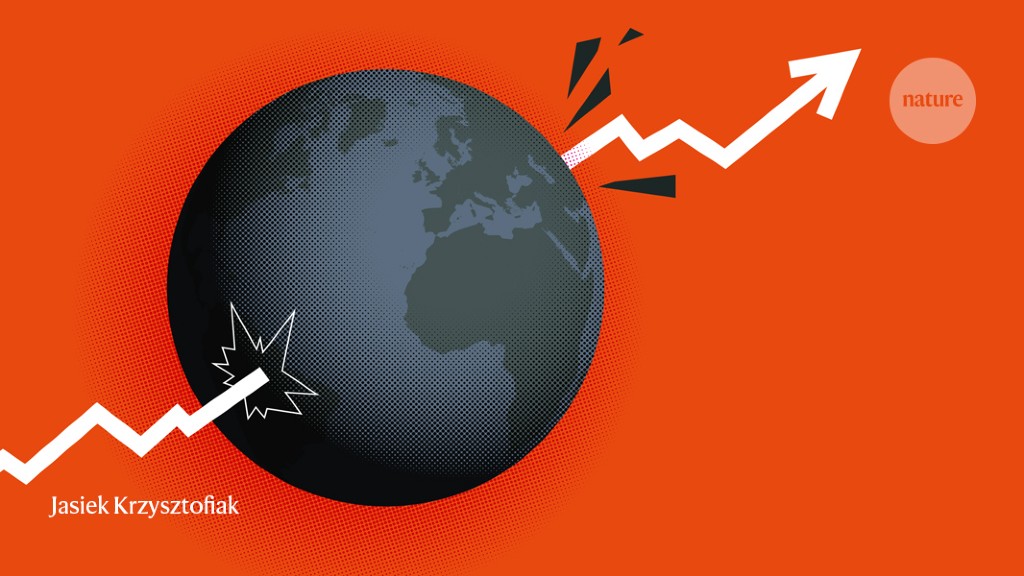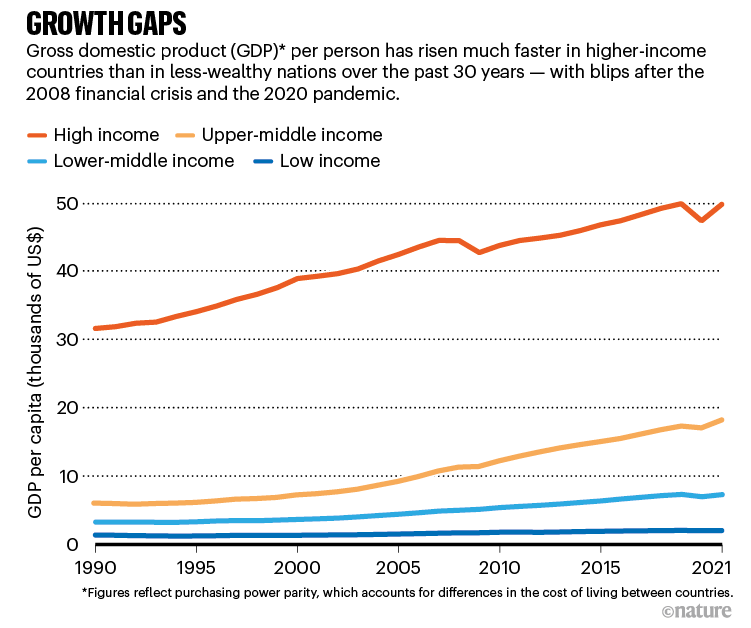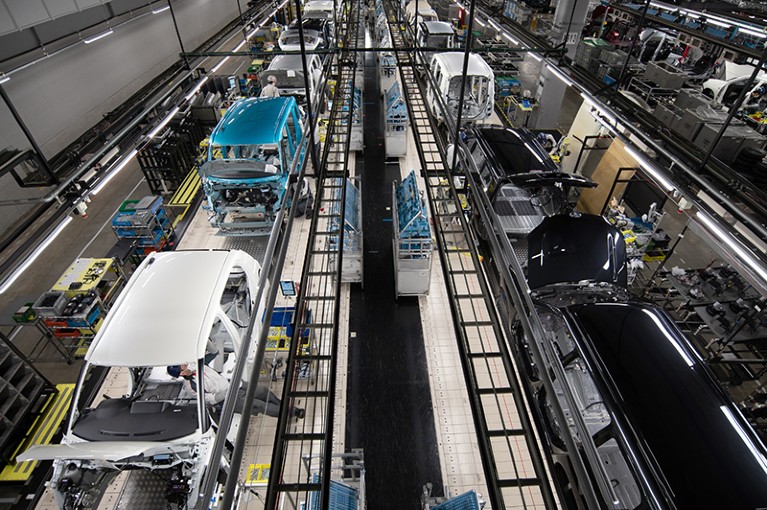The numbers are heading in the wrong direction. If the world continues on its current track, it will fall well short of achieving almost all of the 17 Sustainable Development Goals (SDGs) that the United Nations set to protect the environment and end poverty and inequality by 2030.
The projected grade for:
Eliminating hunger: F.
Ensuring healthy lives for all: F.
Protecting and sustainably using ocean resources: F.
The trends were there before 2020, but then problems increased with the COVID-19 pandemic, war in Ukraine and the worsening effects of climate change. The world is in “a new uncertainty complex”, says economist Pedro Conceição, lead author of the United Nations Human Development Report.
One measure of this is the drastic change in the Human Development Index (HDI), which combines educational outcomes, income and life expectancy into a single composite indicator. After 2019, the index has fallen for two successive years for the first time since its creation in 1990. “I don’t think this is a one-off, or a blip. I think this could be a new reality,” Conceição says.
UN secretary-general António Guterres is worried. “We need an urgent rescue effort for the SDGs,” he wrote in the foreword to the latest progress report, published in July. Over the past year, Guterres and the heads of big UN agencies, such as the Statistics Division and the UN Development Programme, have been assessing what’s gone wrong and what needs to be done. They’re converging on the idea that it’s time to stop using gross domestic product (GDP) as the world’s main measure of prosperity, and to complement it with a dashboard of indicators, possibly ones linked to the SDGs. If this happens, it would be the biggest shift in how economies are measured since nations first started using GDP in 1953, almost 70 years ago1.
Get the Sustainable Development Goals back on track
Guterres’s is the latest in a crescendo of voices calling for GDP to be dropped as the world’s primary go-to indicator, and for a dashboard of metrics instead. In 2008, then French president Nicolas Sarkozy endorsed such a call from a team of economists, including Nobel laureates Amartya Sen and Joseph Stiglitz.
And in August, the White House announced a 15-year plan to develop a new summary statistic that would show how changes to natural assets — the natural wealth on which economies depend — affect GDP. The idea, according to the project’s main architect, economist Eli Fenichel at the White House Office of Science and Technology Policy, is to help society to determine whether today’s consumption is being accomplished without compromising the future opportunities that nature provides. “GDP only gives a partial and — for many common uses — an incomplete, picture of economic progress,” Fenichel says.
The fact that Guterres has made this a priority, amid so many major crises, is a sign that “going beyond GDP has been picked up at the highest level”, says Stefan Schweinfest, the director of the UN Statistics Division, based in New York City.
Grappling with growth
GDP is a measure of economic activity that has ended up becoming the world’s main index for economic progress. By a commonly used definition, it is the numerical sum of countries’ consumer and government spending and their business investments, adding the value of exports minus imports. When governments and businesses talk, as they regularly do, about boosting ‘economic growth’, what they mean is boosting GDP.
But GDP is more than a growth target. It is also the benchmark for how countries measure themselves against each other (see ‘Growth gaps’). The United States is the world’s largest economy, as measured by GDP. China, currently second, is on a path to overtake it.
Source: World Bank
GDP also matters greatly to politicians. When India leapfrogged the United Kingdom to become the world’s fifth largest economy earlier this year, it made headline news. Last month, China reportedly delayed publication of its latest (and less-than-flattering) quarterly GDP figures so they would not appear during the Communist party’s national congress, at which Xi Jinping took a third term as president.
“GDP is without question the superstar of indicators,” says Rutger Hoekstra, a researcher who studies sustainability metrics at Leiden University in the Netherlands and author of Replacing GDP by 2030.
The problem with using GDP as a proxy for prosperity, says Hoekstra, is that it doesn’t reflect equally important indicators that have been heading in the opposite direction. Global GDP has increased exponentially since the Industrial Revolution, but this has coincided with high levels of income and wealth inequality, according to data compiled by the economist Thomas Piketty at the World Inequality Lab in Paris2. This is not a coincidence. Back in the 1950s, when countries pivoted economies to maximizing GDP, they knew it would mean “making the labourer produce more than he is allowed to consume”, as Pakistan’s then chief economist Mahbub ul Haq graphically put it3. “It is well to recognize that economic growth is a brutal, sordid process.”
What is more, to boost GDP, nations need to indulge in environmentally damaging behaviour. In his 2021 report, entitled Our Common Agenda, Guterres writes: “Absurdly, GDP rises when there is overfishing, cutting of forests or burning of fossil fuels. We are destroying nature, but we count it as an increase in wealth.”
This tension is apparent when it comes to the SDGs. GDP growth is associated with several SDG targets; in fact SDG 8 is about boosting growth. But GDP growth “can also come at the expense of progress towards other goals”, such as climate and biodiversity action, says environmental economist Pushpam Kumar, who directs a UN Environment Programme (UNEP) project, called the Inclusive Wealth Report, to measure sustainability and inequality. The latest report will be published next month.
The one-number problem
The present effort by Guterres and his colleagues is not the first time policymakers have tried to improve on GDP. In 1990, a group of economists led by ul Haq and Sen designed the HDI. They were motivated in part by frustration that their countries’ often impressive growth rates masked more-dismal quality-of-life data, such as life expectancy or education.
More recently, environment ministers have found that GDP-boosting priorities have got in the way of their SDG efforts. Carlos Manuel Rodríguez, the former environment minister of Costa Rica, says he urged his finance and economics colleagues to take account of the impact of economic development on water, soils, forests and fish. But they were concerned about possible reductions in GDP calculations, says Rodríguez, now chief executive of the Global Environment Facility, based in Washington DC. Costa Rica didn’t want to be the first country to implement such a change only to possibly see itself slide down the growth rankings as a result.
Industrial production, such as the work at this automobile plant in Japan, goes into GDP calculations.Credit: Akio Kon/Bloomberg via Getty
China’s environmental policymakers were confronted with a similar response when, in 2006, they tried to implement a plan called Green GDP4. Local authorities were asked to measure the economic cost of pollution and environmental damage, and offset that against their economic growth targets. “They panicked and the project was shelved,” says Vic Li, a political economist at the Education University of Hong Kong, who has studied the episode. “Reducing GDP would have affected their performance reviews, which needed GDP to always increase,” he says.
It’s been a similar story in Italy. In 2019, then research minister Lorenzo Fioramonti helped to establish an agency, Well-being Italy, attached to the prime minister’s office. It was intended to test economic policy decisions against sustainability targets. “It was an uphill battle because the various economic ministries did not see this as a priority,” says Fioramonti, now an economist at the University of Surrey in Guildford, UK.
Revising the rules
So, can the latest attempt to complement GDP succeed? Economists and national statisticians who help to determine GDP’s rules say it will be a struggle.
Guterres and his colleagues are proposing to include 10–20 indicators alongside GDP. But that’s a tough sell because countries see a lot of value (not to mention ease of use) in relying on one number. And GDP’s great success is that countries produce their own figures, according to internationally agreed rules, which allow for cross-comparison over time. “It’s not a metric compiled by Washington DC, Beijing or London,” says Schweinfest.
At the same time, GDP is not something that can just be turned on or off. In each country, tracking the data that goes into calculating GDP is an industrial-scale operation involving government data as well as surveys of households and businesses.
Are there limits to economic growth? It’s time to call time on a 50-year argument
China, Costa Rica and Italy’s experiences suggest that an environment-adjusted GDP might be accepted only if every country signs up to the concept at the same time. In theory, this could happen at the point when GDP’s rules — known as the System of National Accounts — are being reviewed, an event that takes place roughly once every 15 years.
The next revision to the rules is under way and is due to be completed in 2025. The final decision will be made by the UN Statistical Commission, a group of chief statisticians from different nations, together with the European Commission, the International Monetary Fund, the World Bank and the Organisation for Economic Co-operation and Development (OECD), the network of the world’s wealthy countries.
Because the UN oversees this process, Guterres has some influence over the questions that the review is asking. As part of their research, national statisticians are exploring how to measure well-being and sustainability, along with improving the way the digital economy is valued. Economists Diane Coyle and Annabel Manley, both at the University of Cambridge, say that technology and data companies, which make up seven out of the global top ten firms by stock-market capitalization, are probably undervalued in national accounts5.
However, according to Peter van de Ven, a former OECD statistician who is the lead editor of the GDP revision effort, some aspects of digital-economy valuation, along with putting a value on the environment, are unlikely to make it into a revised GDP formula, and will instead be part of the report’s supplementary data tables. One of the reasons, he says, is that national statisticians have not agreed on a valuation methodology for the environment. Nor is there agreement on how to value digital services such as when people use search engines or social-media accounts that (like the environment) are not bought and sold for money.
Yet other economists, including Fenichel, say that there are well-established methods that economists use to value both digital and environmental goods and services. One way involves asking people what they would be willing to pay to keep or use something that might otherwise be free, such as a forest or an Internet search engine. Another method involves asking what people would be willing to accept in exchange for losing something otherwise free. Management scientists Erik Brynjolfsson and Avinash Collis, both at the Massachusetts Institute of Technology in Cambridge, did an experiment6 in which they computed the value of social media by paying people to give up using it.
The value of nature
Economist Gretchen Daily at Stanford University in California says it’s not true that valuing the environment would make economies look smaller. It all depends on what you value. Daily is among the principal investigators of a project called Gross Ecosystem Product (GEP) that has been trialled across China and is now set to be replicated in other countries. GEP adds together the value of different kinds of ecosystem goods and services, such as agricultural products, water, carbon sequestration and recreational sites. The researchers found7 that in the Chinese province of Qinghai, the region’s total GEP exceeded its GDP.
Although past efforts to avoid using GDP have stalled, this time could be different. It’s likely, as van de Ven says, that national statisticians will not add nature (or indeed the value of social media and Internet search) to the GDP formula. But the pressure for change is greater than at any time in the past.
GDP is like a technical standard, such as the voltage of household electricity or driving on the left, says Coyle. “So if you want to switch to the right, you need to align people on the same approach. Everyone needs to agree.”










More News
I study artefacts left in prehistoric caves
How artificial intelligence is helping to identify global inequalities
Tackling ‘wicked’ problems calls for engineers with social responsibility